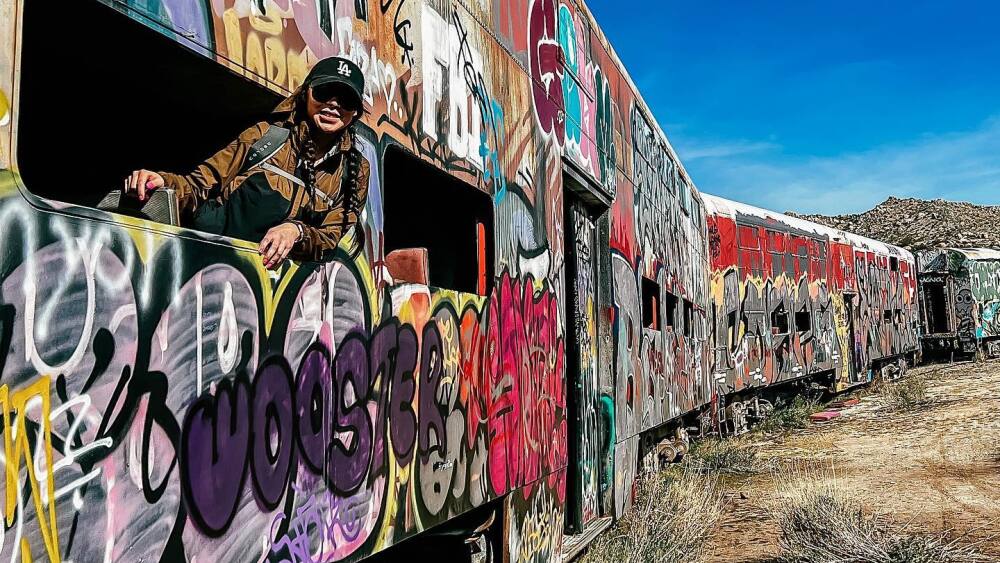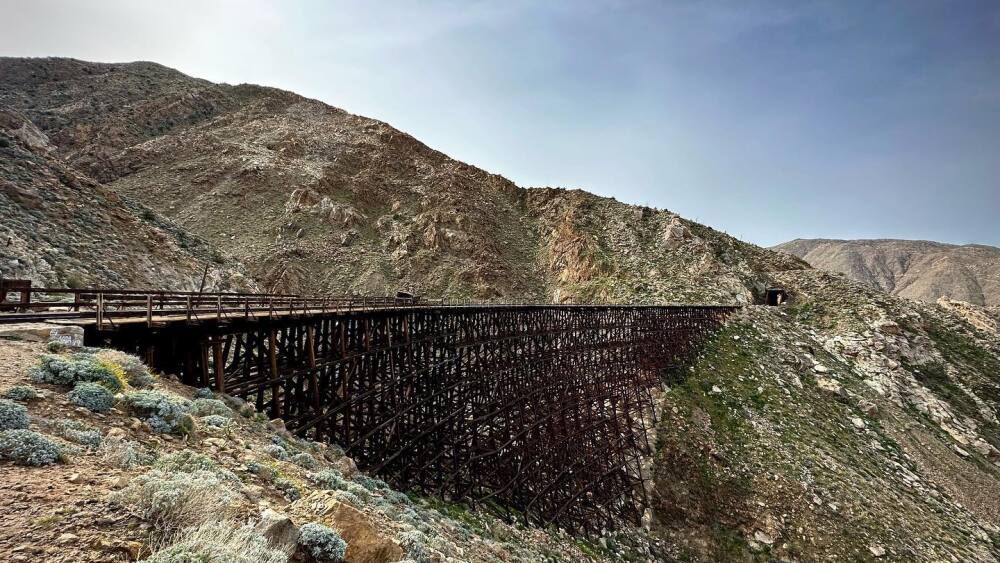All aboard, we’re exploring the “Impossible Railroad” in Campo in southeastern San Diego County. Much of the track now sits abandoned, but tells stories of early life in San Diego — and it’s possible it could run again.
Getting into motion
Construction on the San Diego and Arizona Eastern Railway — later nicknamed the Impossible Railroad — began in 1907 to connect San Diego to Yuma, AZ. At the time, SD was largely disconnected from the rest of the nation because of its desert terrain that was nearly impossible to build on, making it difficult to transport supplies.
Thanks to contributions from famous local entrepreneur John D. Spreckels, his brother Adolph B. Spreckels, and silent financier Edward H. Harriman, the 148-mile track became a reality and passed through Tecate in Baja California and Tijuana, Mexico. John Spreckels famously drove the final spike into the track in 1919.
Chugging along
Throughout its life, the Impossible Railroad has undergone repairs due to rain, fire, and even hurricane damages. MTS purchased 108 miles of the railroad in 1979, including the Desert Line — a 70-mile track that runs through Campo and Jacumba.
This segment of the track stopped transporting freight in 2008 due to its condition, though there have been efforts to rebuild it. It’s currently abandoned with many vacant train cars along the railway.

It looks like this train has been slightly redecorated.
Photo via @aneverendingbook
The remaining history
Though it’s not currently operating, the Desert Line contains incredible structures that changed the world of transportation. In the Carrizo Gorge area, you can find 14 trestles and 21 tunnels — including the Goat Canyon trestle, the world’s longest curved wooden trestle.
These sights should only be enjoyed from afar — the tracks are MTS property, and hikers are prohibited from walking on them. Some hiking trails provide views of the railway from a safe distance, like those in Carrizo Gorge, but these treks can be challenging, especially during hotter months.











